Scream Movies Ranked from Worst to Best
What’s your favorite scary movie? When it comes to the Scream franchise, we have six great ones to choose from (or at least five…).
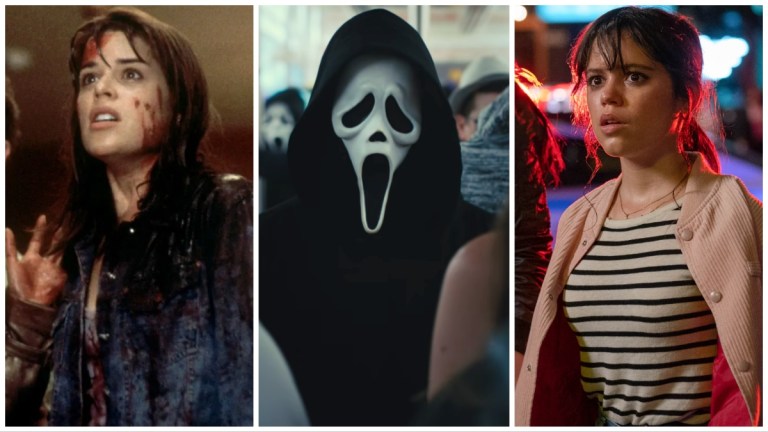
Twenty-seven years ago, Drew Barrymore’s movie night was ruined when she picked up a phone call that should have gone unanswered. The resulting carnage remains one of the most chilling moments in slasher cinema. Thus began Scream, a horror movie that changed the face of the genre and which nearly three decades later is still going strong. In fact, Ghostface—the mysterious and chatty Halloween costume worn by various killers—ranks these days among the movie monsters he once idolized. Freddy, Jason, even Michael Myers have had to make room for a character whose series is arguably just as popular now as it was in 1996.
Through it all, the Scream movies have found surprisingly consistent ways of keeping the formula fresh while maintaining the core concept: a group of young people who consider themselves media savvy find themselves trapped in a retro scary movie that also doubles as a particularly gory whodunit. All the while, the series comments on the current state of horror, whatever that might be. Scary movies change, but Scream’s ability to mock and taunt them does not.
Despite the impressive amount of quality control in this franchise though, not all entries are of equal stature. While the 1996 movie is an undisputed classic, has there been a Scream sequel to match it? And of the five follow-ups released in the last two and a half decades, which (if any) came up short? Join us below as we rank the Scream movies from worst to best and find out!

6. Scream 3 (2000)
The weakest link in the Screamfranchise is without question its third installment. Released in 2000, it came right at the end of the revitalized wave of slasher movies Scream had kicked off four years earlier. By now, there had been too many knock-offs and cash-ins, and horror fans were already turning toward other scares. The Blair Witch Project had been released a year earlier, for example, proving that you didn’t need glossy visuals or well-known actors to terrify audiences, and the J-horror wave was also about to hit, with Ring, Audition, and Ju-on: The Curse all competing for the discerning horror fan’s attention.
But while that might explain the generally negative reception Scream 3 received when it was released, it doesn’t excuse the fact that it’s just not a very good film. Watched back to back with its two predecessors, Scream 3 is noticeably less tense. In fact, it’s kind of silly. Of course the whole Scream franchise is marked by satirical humor to some extent, but previously that satire had felt organic; it fit with the characters. Scream 3 ramps up the daftness to the point where characters start to feel like caricatures of themselves.
Part of the problem might be that Kevin Williamson, who wrote the two previous Screamfilms, wasn’t available to pen this one. He submitted an outline, but that was largely thrown out and the actual script writing was done by Ehren Kruger. Kruger would go on to write the screenplays for The Ring, The Ring 2, The Skeleton Key, and four Transformers movies, so it’s not like he’s an amateur, but he didn’t manage to capture Williamson’s tone. Precocious teenagers who know way too much about pop culture are Williamson’s bread and butter—he created Dawson’s Creek, after all—and his voice is sadly missing here. And there’s another (and bigger) problem with this movie.
In 1999, just before Scream 3 was due to start production, two teenagers orchestrated a massacre on their classmates at Columbine High School. The killings were so shocking that they were hard to understand, and many people were looking for some external factor to blame—video games, music, and movies were all under suspicion. Could violent media be breeding more violent kids?
I don’t want to seem disrespectful here, at all, because the events at Columbine were tragic and it’s still hard, even now, to think about. The reason it’s relevant though is that the studio was hyper-aware of the tragedy and made major changes to Scream 3 as a result. Plot lines Williamson had suggested were thrown out to ensure there was no link between the onscreen violence and high school, and in fact at one point, the studio wanted the movie to be completely void of violence and gore. Wes Craven protested on that point, insisting that Scream 3 had to be in line with its predecessors or there wasn’t any point in even labelling it a Scream film, and though he got his way, the comedy in the film was ramped up to try to compensate for it. Unfortunately, it’s not even very funny, and it might have been better for all concerned to just delay the production for a year or two.
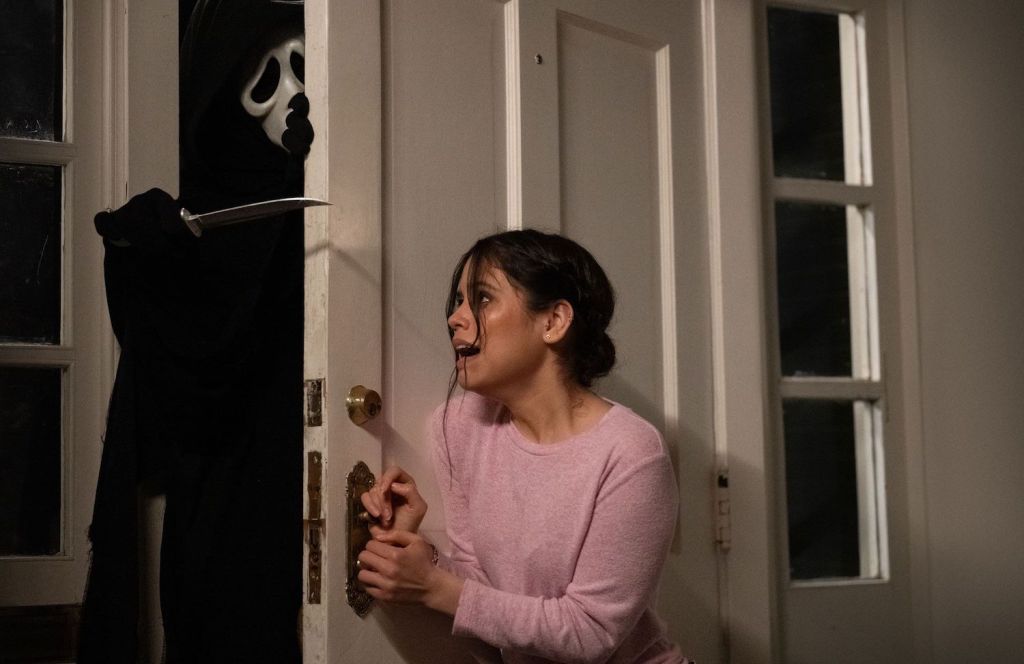
5. Scream (2022)
It’s strange to put a movie we genuinely like so low on this list. Yet this is perhaps more of a credit to the franchise’s overall consistency than a ding against 2022’s Scream (aka Scream 5). If Scream 4 turned out to be a tad premature in tapping into ‘90s wistfulness back in 2011, then Scream 5 taking advantage of the unofficial “30-year-rule” about nostalgia proved just right. It also allowed this one to become a biting satire of legacy sequels or “requels,” as James Vanderbilt and Guy Busick’s screenplay redubs them.
Set about a quarter-century after Billy Loomis and Stu Macher’s original killing spree, Scream ’22 finds a Woodsboro that’s lived long enough to half-forget the legacy of those guys’ bloody deeds. So in a deliciously clever opening sequence, young Tara Carpenter (Jenna Ortega) has barely any awareness of the Stab movies (the Scream films within the Scream films), preferring “elevated horror.” She doesn’t even recognize the familiar growl of Roger L. Jackson’s voice as he taunts her over the phone about liking that “boring” junk like The Babadook and The Witch. She certainly doesn’t know she’s in danger of being stabbed seven times!
This sets the table for what is a clever deconstruction/embrace of modern franchise reboots. Legacy characters like Dewey (David Arquette), Gale (Courteney Cox), and Sidney (Neve Campbell) are back, but they’re now supporting players for a new generation’s melodrama and terrors. The rules are similar but different, which is signaled immediately by the fact Tara survives the “opening kill”(producers are also likely thanking their lucky stars they didn’t kill off future-Wednesday superstar, Ortega). It really is the same but different, with there now being two Final Girls, Tara and her estranged big sister Sam (Melissa Barrera), whose family secrets tie all the way back to the original ’96 movie.
Those ideas and sisterly bonds would be better fleshed out by the movie’s immediate sequel. In the case of Scream 5 though, the film astutely plays the hits while making fun of requels that can do only that. The set pieces lack a bit of the theatrical flourishes imbued by Wes Craven’s best scenes, but directors Matt Bettinelli-Olpin and Tyler Gillett pick up the reins admirably. They’re also unleashed to indulge the gore in a way Craven never was in his day. Most of all though, the movie works because it has one of the best killer reveals in the franchise’s history, with the film’s murderers elevating the film into a scathing satire of fanboy culture. The killers’ motives and final twists are among the very best in the series, behind only Scream 4 and the ’96 trendsetter.
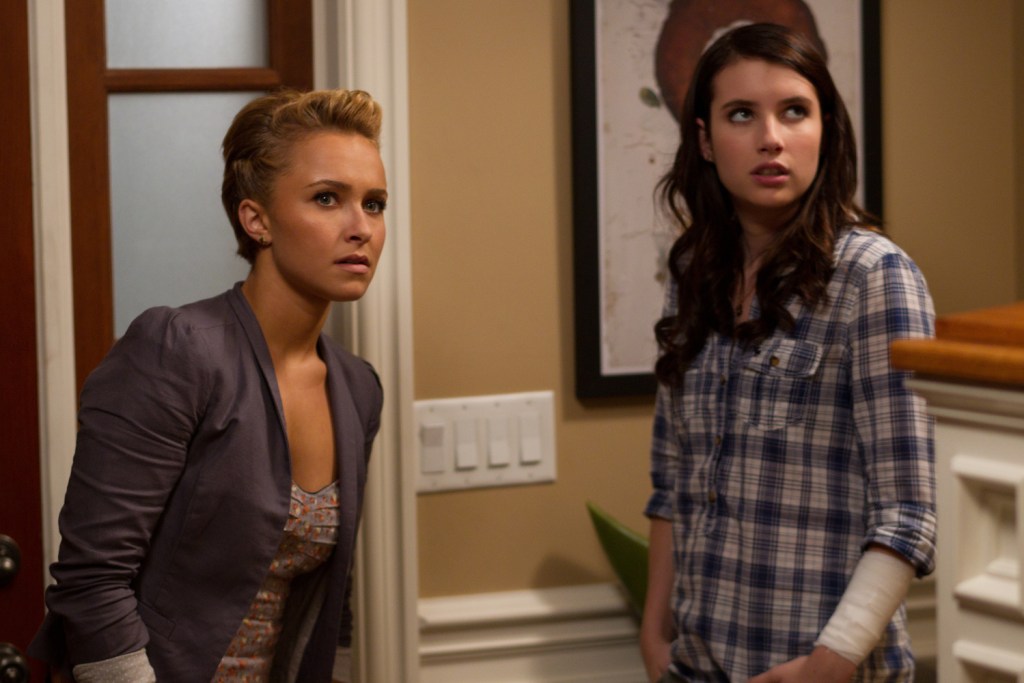
4. Scream 4 (2011)
The lowest grossing of all the Scream films, Scream 4 did not get as much love as it deserved. Released a full 11 years after Scream 3, Craven et al were taking a risk with this one, chancing their arms that people would still be interested in the exploits of Ghostface, even after the ending of Scream 3 had apparently put the franchise to rest. And after all that time, after the horror genre had moved on again, it could have been a disaster of a film. But it wasn’t. It isn’t. It’s actually kind of brilliant.
Scream 4 brings back the three main surviving characters from the franchise: Sidney Prescott, Gale Weathers, and Dewey Riley. Smartly, it also doesn’t try to pretend the big gap between the third film and this one didn’t happen. The characters have moved on with their lives, and they’re in very different places now than they were back then. Sidney’s an author, taking her book on surviving the last three films on the road. Gale and Dewey are married, and while he’s become the sheriff, she’s struggling with writers’ block, which puts a strain on their relationship—fitting, really, since in real life Courtney Cox and David Arquette had got married, had a child, and separated.
And while the original characters have all aged and grown out of horror movie stereotypes, a new generation has stepped up to fill the gap.
These kids are even more genre-savvy than the original cast, with Hayden Panettiere’s character, Kirby, out-nerding everyone else in the franchise. (The scene where she cuts off the killer’s question about horror remakes by reeling off more than a dozen remakes is particularly brilliant.) Rather than harking back to the slashers of the ’80s like the first movie, Scream 4 takes on a new wave of horror and introduces a new set of rules. In its way, it’s as funny and clever as the original was. And in spite of everything, the reveal of the killer(s) is a real shock. No spoilers, but the performance of the actor(s) playing the killer(s) is inspired, full of demented, manic energy.
So why didn’t it do better at the box office? Maybe 11 years was just too big a gap for a sequel… yet too small of a gap for a legacy sequel. Indeed, Scream 4 in retrospect feels like it came out both too late and too early, in the latter case because it predicted the trend of legacy sequels in the decade to come like The Force Awakens and Jurassic World. Distance makes the heart grow fonder, as Scream discovered when it tried the legacy sequel thing again (and even coined a new term for it with “requel”) in 2022. In the meantime though, we have a very forward-looking film in which a returning Kevin Willimason’s script anticipates influencer culture, the extremes folks will go to trend online, and the fact fans live by the code of “don’t fuck with the original.”
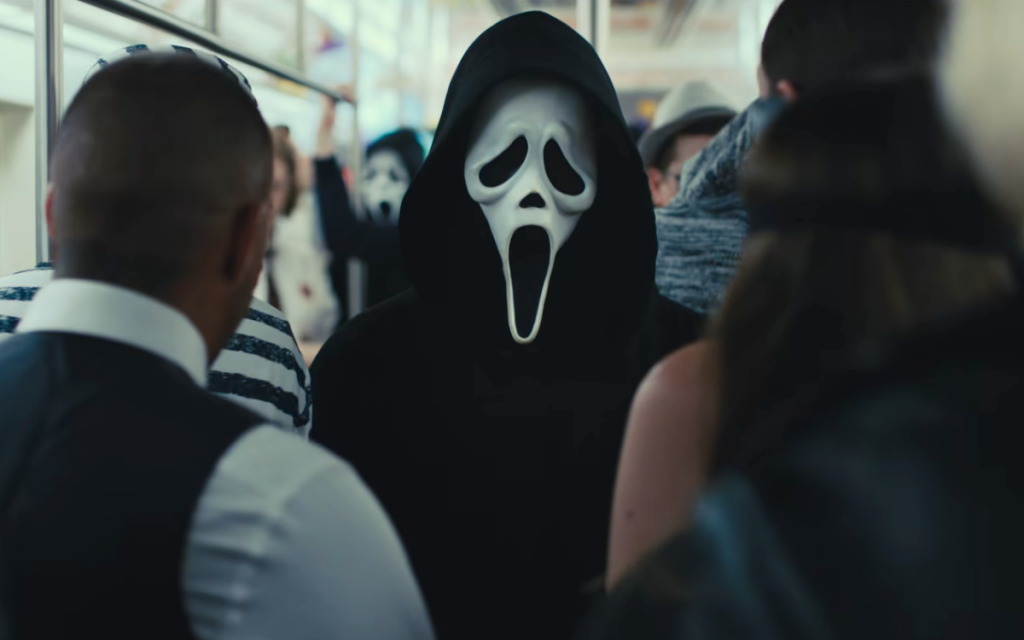
3. Scream VI (2023)
The newest and most operatic Scream film is a difficult one to place. As arguably the most ambitious Ghostface killing spree to date, Scream VI tantalizingly moves the action from the safety of the suburbs or college campuses to New York City during the weekend of Halloween. It also deliberately presents Ghostface at his most brutal and brazen, with the killer following Melissa Barrera and Jenna Ortega’s Carpenter Sisters into a bodega, killing indiscriminately, and finally picking up a shotgun. The fun stops when the tools of Ghostface suddenly echo a far more plausible horror in modern American life.
Similarly, the scene where horror nerd Mindy Meeks-Martin (Jasmin Savoy Brown) is trapped on a crowded subway filled with Ghostface costumes on Halloween night will probably go down as one of the greatest set pieces in the franchise’s history. Indeed, it’s because of moments like that we ultimately rank Scream VI in the top three. For the first time since the original two films, Ghostface feels truly threatening, and the franchise relies more on tension and dread instead of laughs and satire.
Directors Matt Bettinelli-Olpin and Tyler Gillett really hit their stride with the material too, delivering one crackerjack set piece after another. This ranges from a truly inventive opening sequence that ranks right behind the ’96 film to one of the tautest Ghostface attacks in franchise history when Courteney Cox’s Gale Weathers finally gets a killer phone call of her own.
Nonetheless, the movie admittedly loses gas in the climax, featuring probably the weakest Ghostface killer reveal in the series (outside of Scream 3, of course). It also lacks the strong satirical ingenuity showcased by both the 2022 film and Scream 4. Even so, the film does what no entry since Scream 2 has done by sincerely developing new and endearing characters who we fear seeing fall under Ghostface’s knife. And it makes that knife scarier than ever before. In the end, it’s just a bloody good slasher. Perhaps the best in decades.
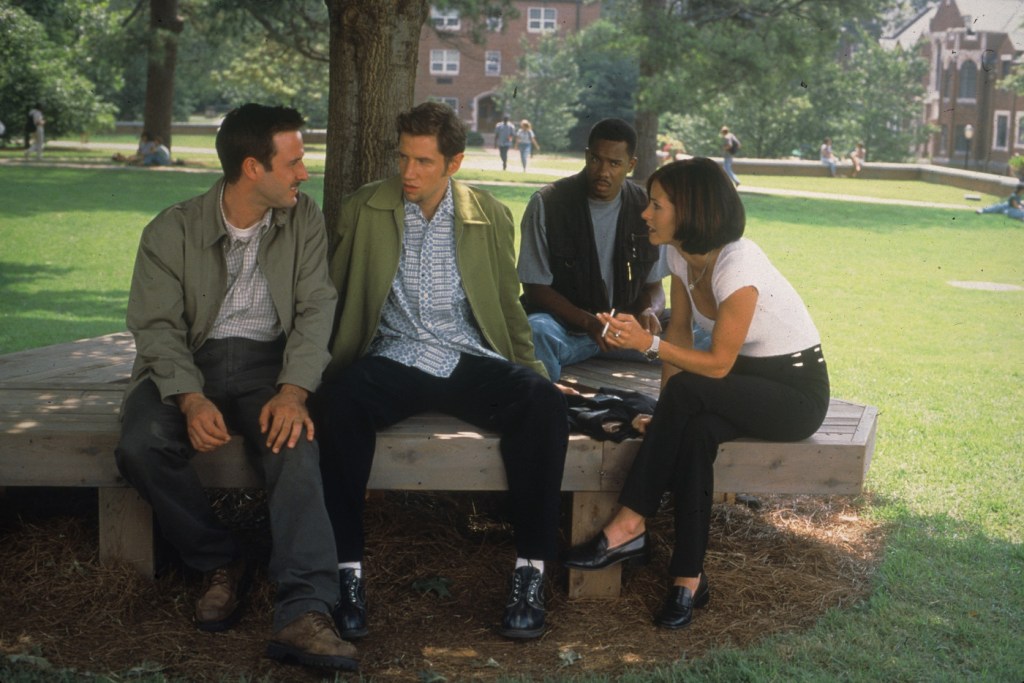
2. Scream 2 (1997)
The first sequel to Scream probably shouldn’t have worked. Greenlit about 11 months before its release date, and barely a month after the first movie debuted in December 1996 to low expectations from its studio, Scream 2 has all the hallmarks of a rush job and cash-in sequel. And to its studio, it was. Fortunately, screenwriter Kevin Williamson and director Wes Craven had higher aspirations.
It undoubtedly helped that Williamson already outlined a second (and third!) movie during that fateful weekend when Williamson began writing the first one. But having the basic idea and executing it are different entirely things, especially as Scream 2 became the first movie whose secrets were leaked to the internet when someone uploaded a draft of the script. Consequently, kill scenes were changed, plot lines rejiggered, and even the identities of the killers were shifted. Goodbye evil roommate Hallie (Elise Neal), and hello evil mama of the original killer, Mrs. Loomis (Laurie Metcalf in what is an admittedly brilliant piece of casting and Friday the 13th homaging).
Despite all the creative hurdles though, Scream 2 also set the standard of what the franchise would become. The first movie was meta and satirical, but in Scream 2 those elements became fully self-aware via the introduction of the Stab franchise, which is Scream movies within Scream movies. Scream 2 even begins at the opening night of Stab: Scream if it was made by a more tasteless director, with the crowd ignoring the humanity of the victims onscreen while being oblivious they have a bonafide Ghostface within their midst… and who is about to brutally kill someone in front of them.
Craven is commenting on horror, and how it’s consumed, but the real innovation here is that rather than focusing on just building the bodycount and elaborateness of the kills, he and Williamson bring back the core four survivors from the previous movie: Sidney, Gale, Dewey, and Randy (Jamie Kennedy). All become truly endearing this time around, and each actor slides more confidently into their role, particularly David Arquette as Dewey (now with his own perfect musical leitmotif, even if it was nicked from Broken Arrow). Kennedy is also a standout Randy with an oh-so-‘90s soul patch and justifiable fear of Showgirls. Alas, Randy is also the most shocking death of the movie, getting gutted in broad daylight on a populated college quad.
The fact the movie makes you feel for its characters, and mourn when some of them don’t make it, speaks to why Scream 2 is among the best slasher sequels. It features two of the best set pieces in the series (Gale and Dewey trapped with the killer in a film studies building, and Sidney and Hallie trapped in a crashed cop car with an unconscious Ghostface), yet its disposition is both suspenseful and playfully cheerful. At times it’s like a rom-com where someone dies every 15 minutes. This arguably set the tone of what Scream became just as much as the ’96 picture.
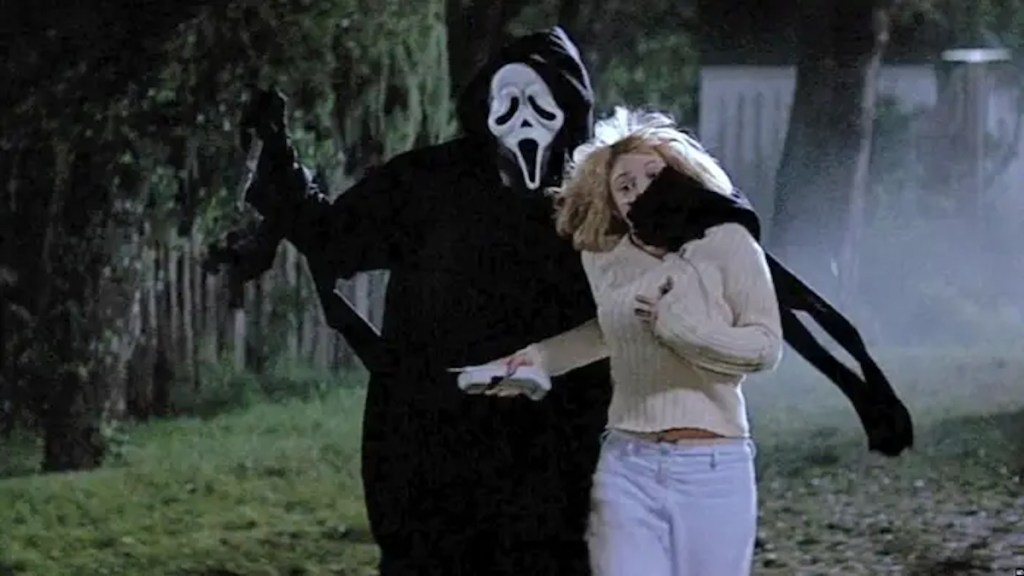
1. Scream (1996)
Ultimately there can only be one winner in this ranking, and it can only be the original movie. Scream basically invented ’90s horror. For budding horror fans who came of age in the mid-1990s, this was a benchmark for what horror should be—and because of its many genre references, it was also a good introduction to slasher movies of other recent decades too. It made you want to go back and rewatch the classics and find new appreciation for them.
Prior to 1996, slasher movies had burnt themselves out with endless sequels and increasingly campy villains, almost all of whom seemed to want to copy John Carpenter’s Halloween (1978) and Michael Myers. The subgenre had become tiresome, something to joke about rather than admire. Audiences often even seemed encouraged to root for the killer. Scream took the formula and made it new again, just by putting its characters in its audience’s shoes. It was a film that understood the genre, trusted its audience to do the same, and made jokes about it. But it took its actual story very seriously.
The opening scene of Scream is a mission statement. A young blonde girl is alone in the house, waiting for her boyfriend to come over when she gets a phone call. A mysterious voice chats to her about her interests, and starts quizzing her about movies. Specifically, scary movies. The conversation becomes increasingly sinister, and then violent. It’s well-crafted with great dialogue, and a spectacularly gory payoff. It said, “We know you’ve seen horror movies, and so have we, and this one is going to be different.”
Not everyone loved it at the time, of course. Lots of older horror fans hated it. But its fast-talking angsty teen protagonists resonated with a younger section of the audience. I’ve said it before, but Williamson has a particular knack for writing dialogue. It might not sound entirely natural, but it sounds cool. It’s how you want to talk when you’re a teenager.
It seems silly to say it now, considering the principal cast stays the same throughout the franchise, but Scream had a bloody great cast too. Neve Campbell was already famous for Party of Five, and here she’s a perfect mixture of vulnerable and capable. Courtney Cox, already starring in Friends, lobbied hard to win the role of Gale Weathers, and it’s hard to imagine anyone else nailing that hard-headed bitchiness so successfully. The casting of David Arquette caused his role to be rewritten so that Dewey would be goofier, and it works. The whole cast probably deserves a shoutout here, but let’s stop with Matthew Lillard, an amazing physical comedian who effortlessly translates his awkwardness into menace. He looms into every other actor’s physical space, insinuating a subconscious menace. Everything just works.
The other key component is that this masked killer talks. It was not a first in the slasher genre, of course. Before Ghostface Craven’s most famous contribution to horror was a guy called Freddy, after all. But it was still a rarity, and none of the traditional killers with a knife and mask had much personality. Jason Voorhees was a glorified zombie on steroids. But Ghostface? He intentionally evokes the eerie Edvard Munch painting, “The Scream,” yet chatters like a playful, seductive, and ultimately terrifying movie nerd. Voice actor by Roger L. Jackson was originally brought in just to run lines with Barrymore when filming her scene. There’s a reason nearly 30 years later, he’s never left the series.
Of course the Scream series has never really left our culture either. It was dormant for a while, but Ghostface cut such a bloody and spectacular path in this ’96 original that he has lived long enough to become a classic character every bit as iconic as a Freddy, Jason, or Michael. And there are few slashers that considered what that means with such wit and intelligence as Scream.